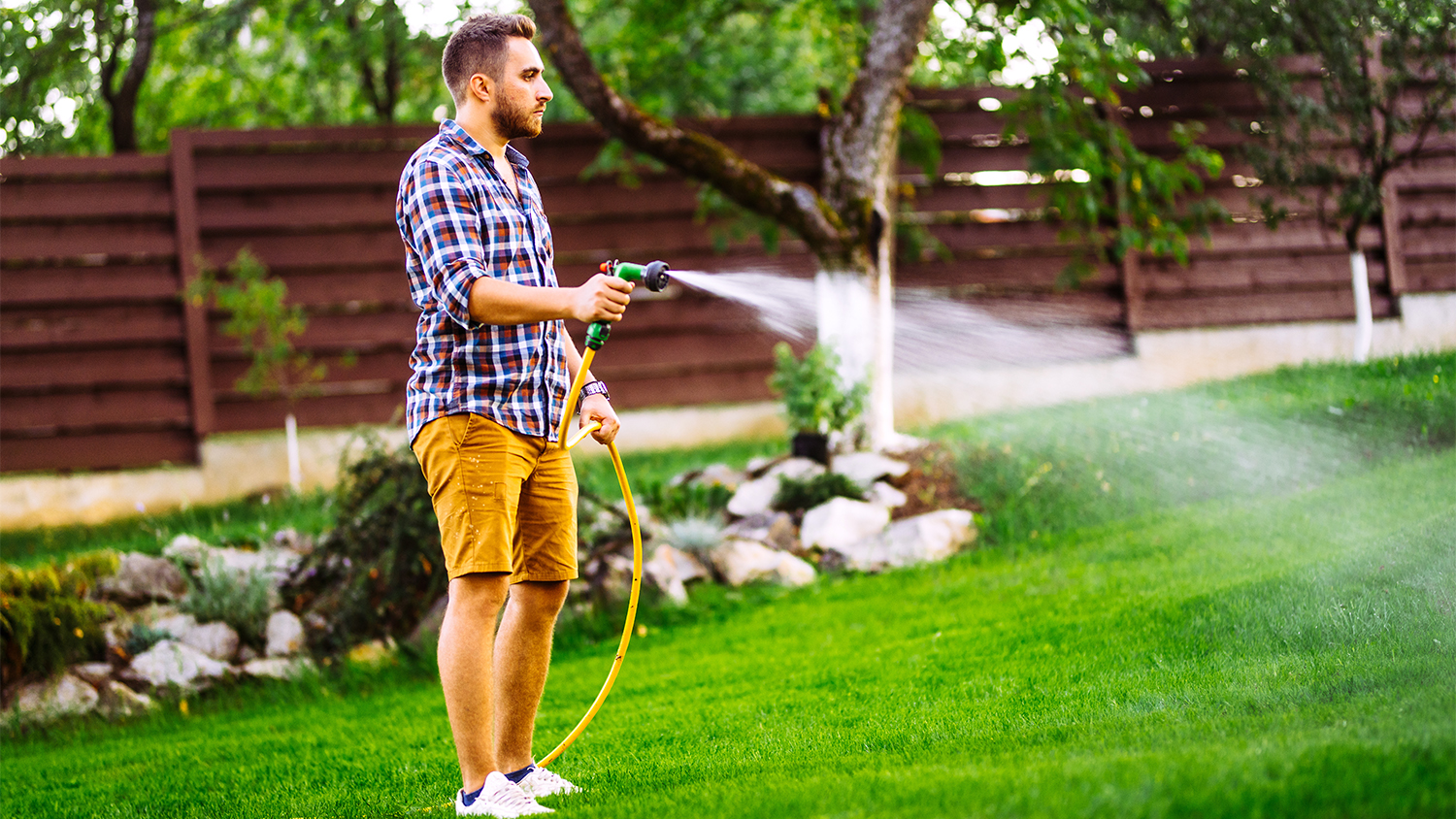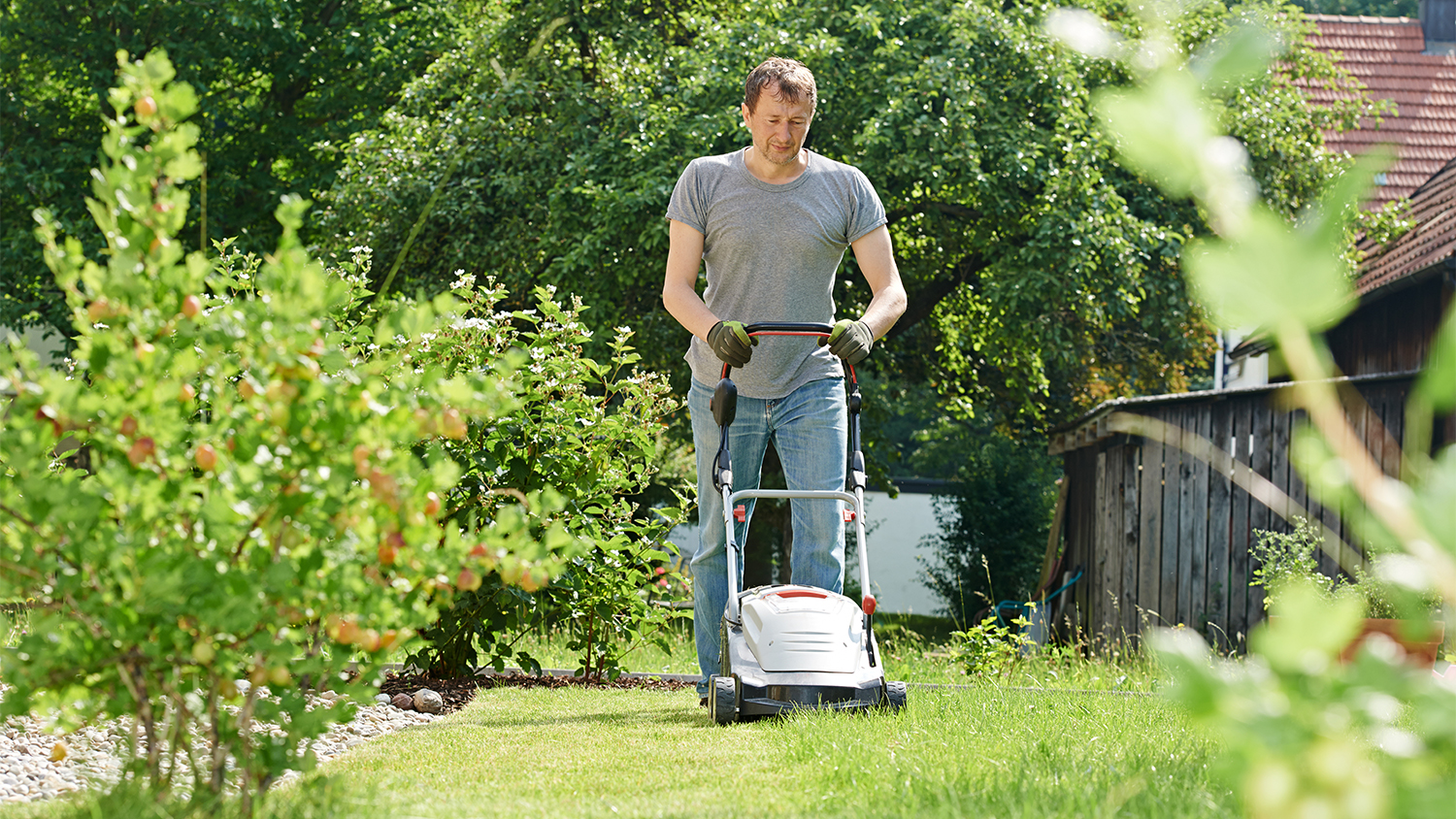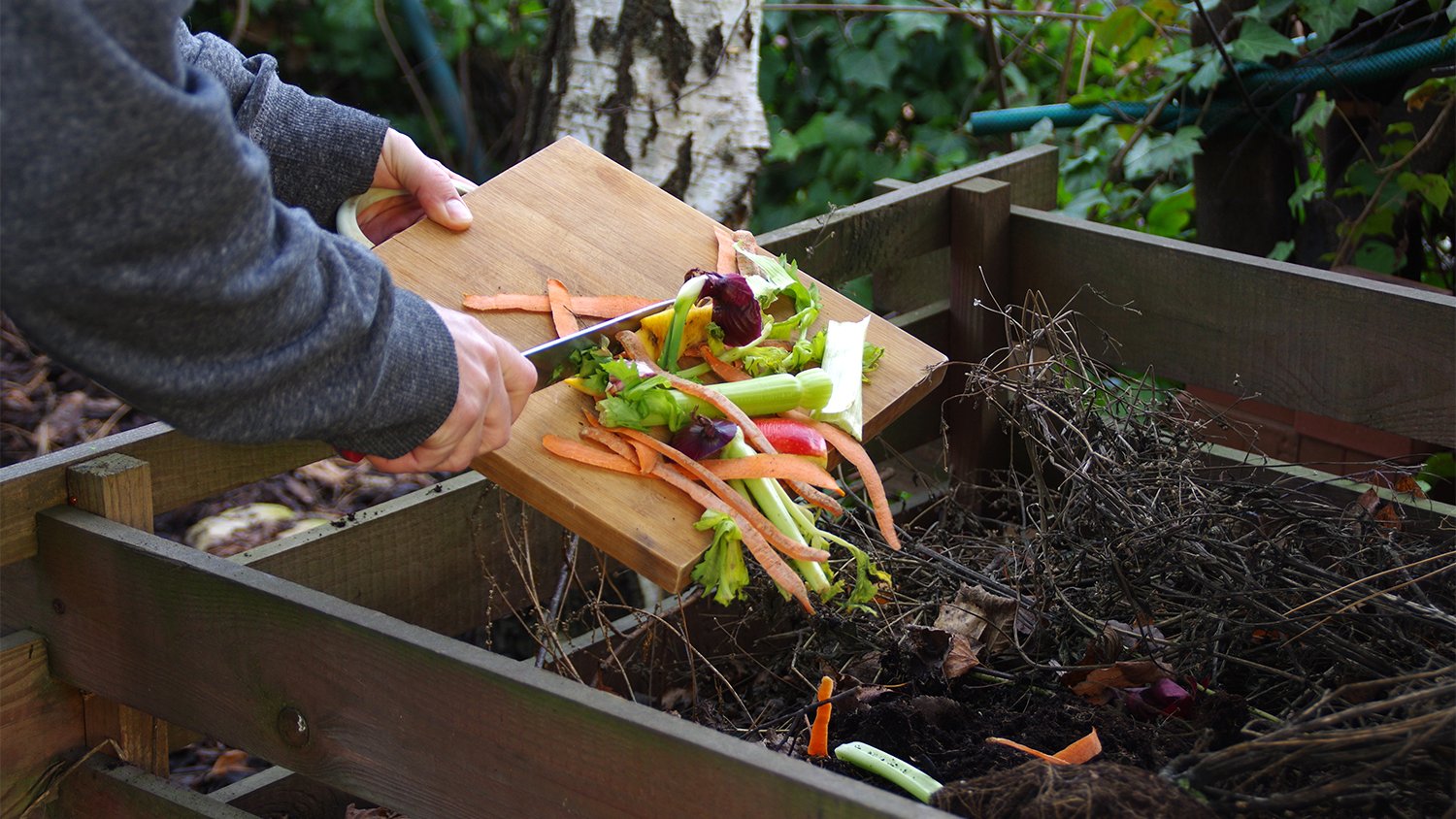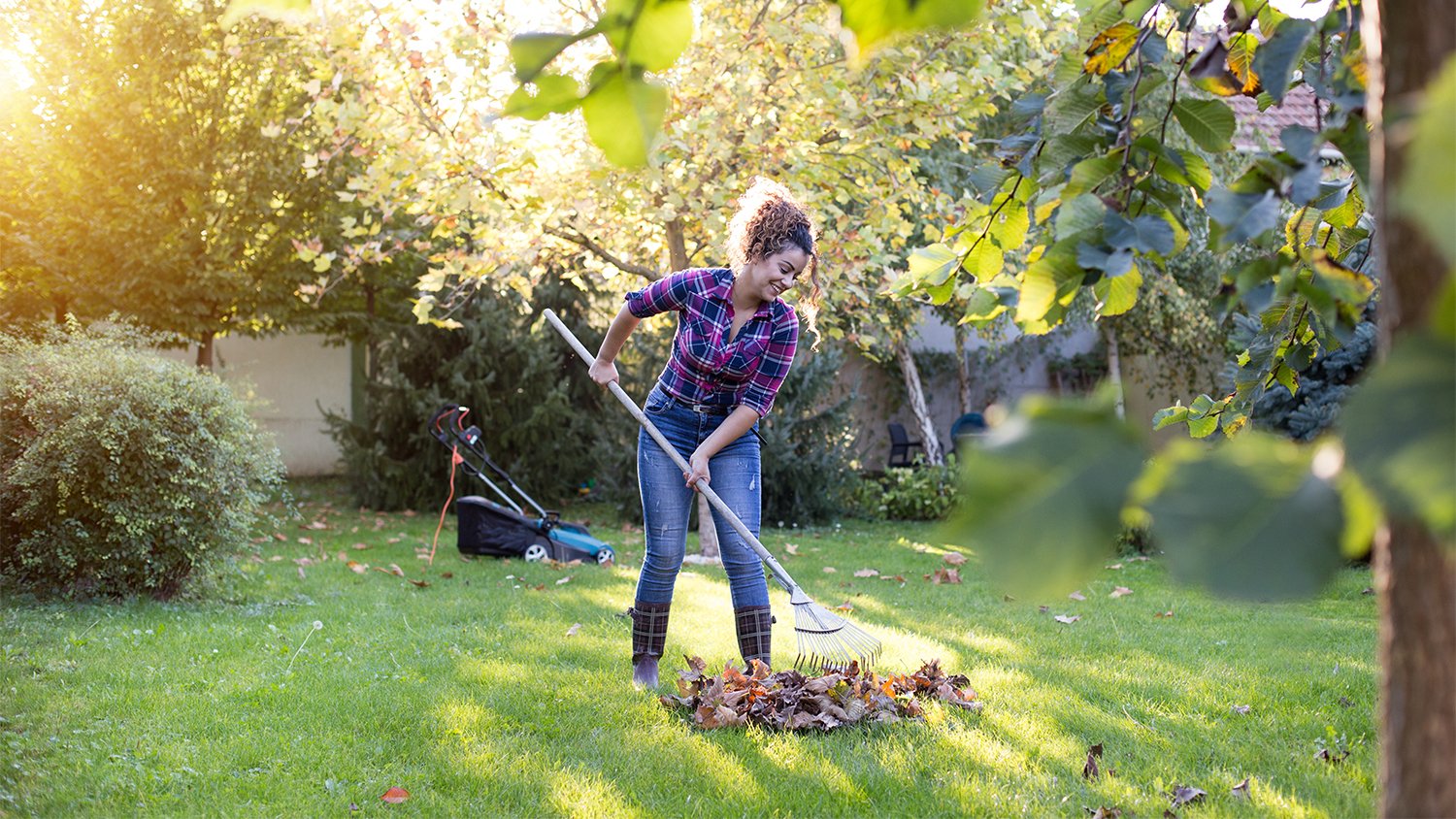10 Easy Ways to Save Money on Lawn Care
If your love affair with your lawn costs a small fortune, there’s plenty you can do to cut costs


Do you invest a surprising amount of time and money in the pursuit of achieving a green lawn? You aren’t alone—Americans spend billions of dollars annually on weeding, seeding, watering, mowing, and fertilizing these personal patches of green space.
But, if you want a yard that still matches up with your neighbor’s while spending less, check out these tips for easy ways to save money on lawn care.
1. Choose the Right Lawn for Your Use and Climate
Warm-season grasses work well when summer temperatures are between 75 and 90 degrees Fahrenheit. Hardy cool-season grasses thrive between 65 and 80 degrees Fahrenheit.
Do your research to select a grass that works for your climate and lifestyle. If you don’t choose wisely, you may have to fork out the expense for a new lawn the following year.
2. Only Water Your Lawn as Needed

Overwatering is one of the most common lawn care mistakes. It can ruin your lawn, and it’s wasteful when water conservation is so important. Plus, you could end up with a needlessly high water bill. Most lawns only need about 1 inch of water every week, including rainfall.
Some lawn water conservation tips include:
Choose sprinklers that spray large water drops close to the ground, rather than ones with a high and fine spray, and position them correctly.
Use a timer to turn the system on and off at appropriate times.
Deal with sprinkler repairs, like leaks or faulty sprinkler heads, promptly.
Excessive evaporation occurs during the heat of the day, so water early in the morning to allow moisture to soak into the ground better.
In hot, dry areas, select drought-tolerant grass species.
Install a rain sensor on an irrigation system, so the irrigation is not running while it’s raining out.
3. Don’t Mow Your Lawn Too Short

It’s tempting to mow your lawn as short as possible. But never removing more than a third of the height of the blades of grass helps maintain a healthier lawn. Blades shorter than 2 or 3 inches can’t shade their roots, and watering and turf repairs become more frequent. Longer grass also helps choke out weeds more effectively, so you won’t have the extra effort and expenses to get rid of them.
4. Fertilize Sparingly
The cost of fertilizing lawns adds up, and many of us spend more than we need to. Overfeeding results in an abundance of weeds and burnt grass.
Doing a soil test before applying additional fertilizers helps you understand what may be beneficial and if your lawn requires anything in the first place.
Usually, fertilizing once or twice during the growing season is enough. However, exact requirements vary depending on your hardiness zone and grass type.
5. Make Your Own Fertilizer

You can save money and do your part for the environment by making your own natural lawn fertilizer. Unlike chemical fertilizers, you can apply this at any time of the year. You can make your compost from grass clippings, leaves, and leftover food scraps such as coffee grounds, eggshells, and vegetable peels.
6. Aerate Your Lawn
As part of your seasonal lawn care, lawn aeration helps your grass’s roots get more air and better absorb nutrients and water. Doing this during the peak growing season is best. You might need to do this annually for high-traffic areas or if your grass grows in heavy, clay soil, but every couple of years should be ample otherwise. Without this simple step, you might have the expense of replacing your lawn sooner than you expect.
Rent or borrow an aerating machine to do this quickly, but if you have a garden fork and don’t mind a rather tedious job, you won’t have any costs.
“Lawn care companies typically offer aerating services in the fall,” says Tara Dudley, Angi Expert Review Board member and owner of Plant Life Designs. “It also pairs well with overseeding, and you could ask about a bundle discount.”
7. Don’t Buy Every Tool Under the Sun

It’s easy to get carried away with purchasing lawn care gadgets, but if you’re on a budget, stick with the essential and less-advanced options or borrow from a friendly neighbor. For example, opt for a lawn rake rather than an electric leaf blower and edging shears rather than a corded strimmer.
8. Hire the Right Lawn Care Specialist
It’s always going to be more cost-effective to tend to your lawn yourself. However, if you have a large yard, little spare time, or just don’t have a green thumb, you might want to hire a local lawn care professional to tend to your yard. The average lawn mowing cost is about $130 per visit, but it varies depending on your lawn size and any add-on services.
Do your research to find the right pro for the job. If they don’t have appropriate experience or a good reputation, you could end up spending more money rectifying the damage they do.
9. Train Your Dog to Potty Only in One Area

Nitrogen-rich dog urine creates unsightly patches of burnt grass on your lawn. You then have the hassle and expense of making multiple spot repairs. It’s worth the effort to train your dog to potty only in a designated sandpit or mulched area. With a bit of patience and lots of rewards, your dog will soon head to that space reliably.
10. Consider Lawn Alternatives for Your Yard
If you're struggling to maintain your lawn, you might want to consider alternative landscaping options or even just reduce its size. While there’s an initial investment at the outset to make the change, if you choose wisely, it could save you money down the road—and it's better for the environment.
Opting for simple, drought-tolerant, and low-maintenance xeriscaping saves water in hot, dry regions, and you won’t have to mow and fertilize.
Another low-maintenance option is a meadow garden. You’ll attract pollinators, and selecting native perennial plants means they should thrive with minimal attention.


